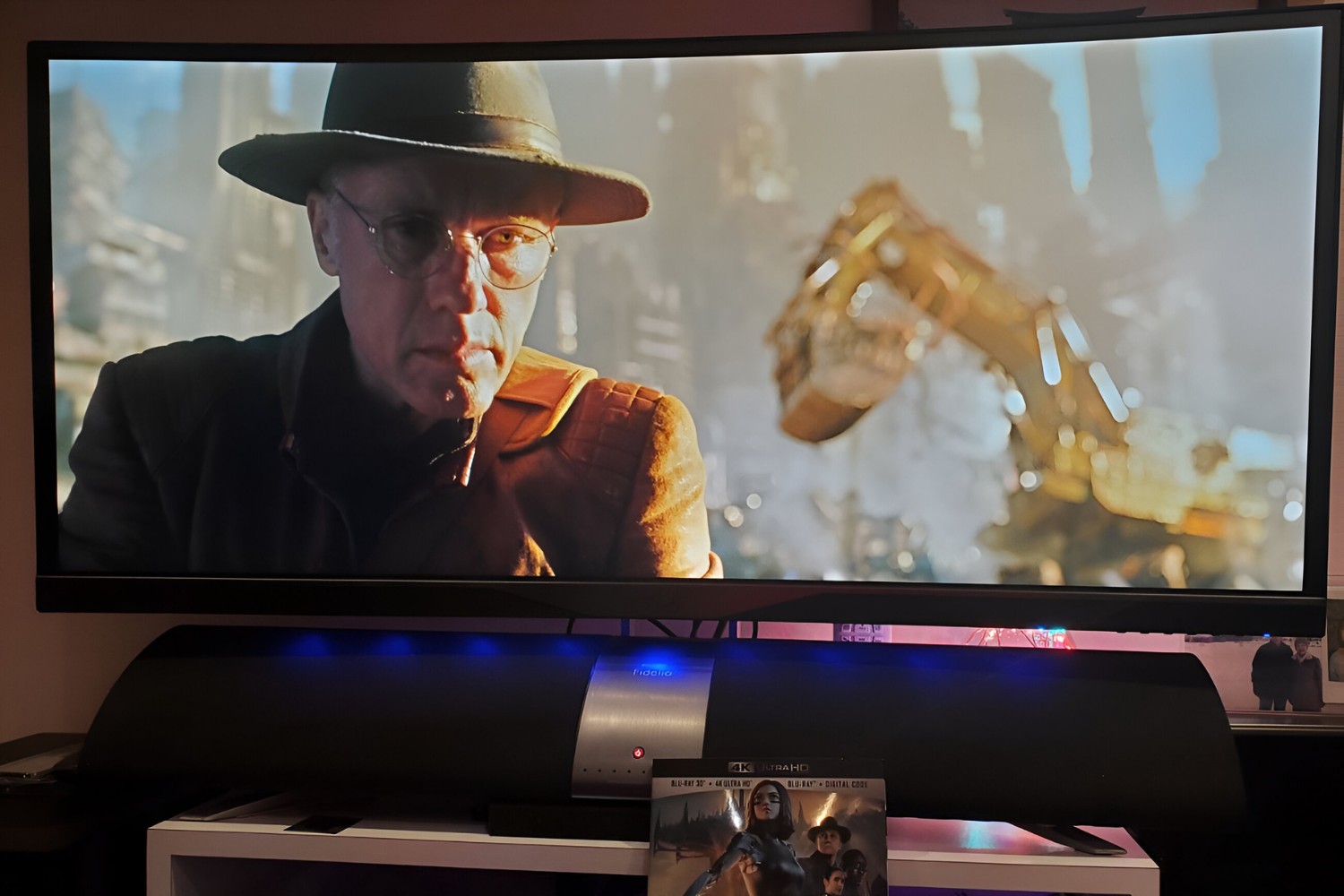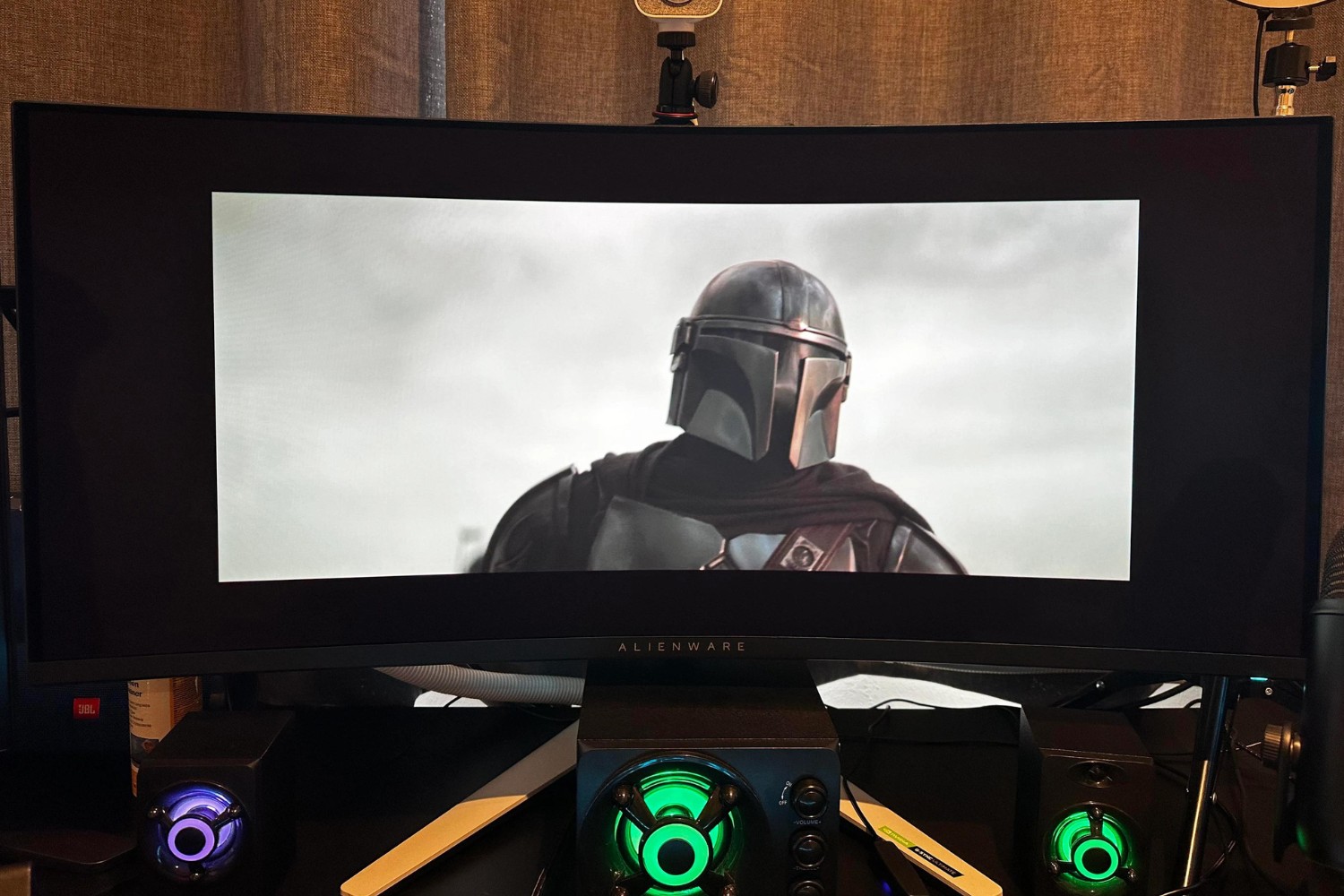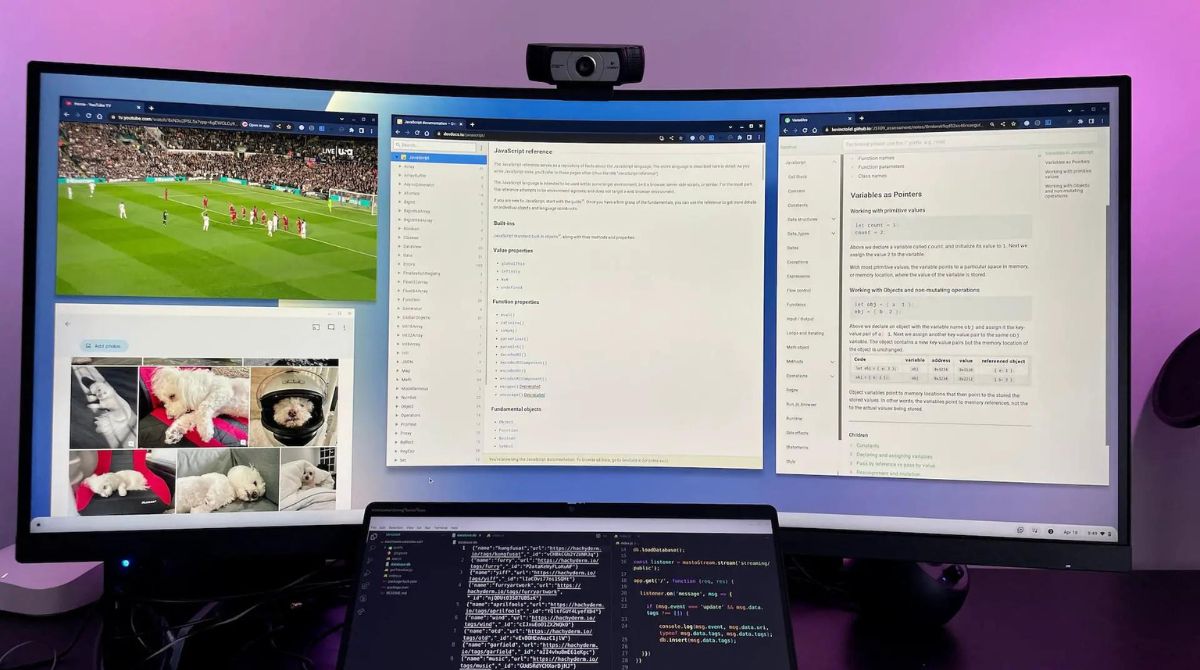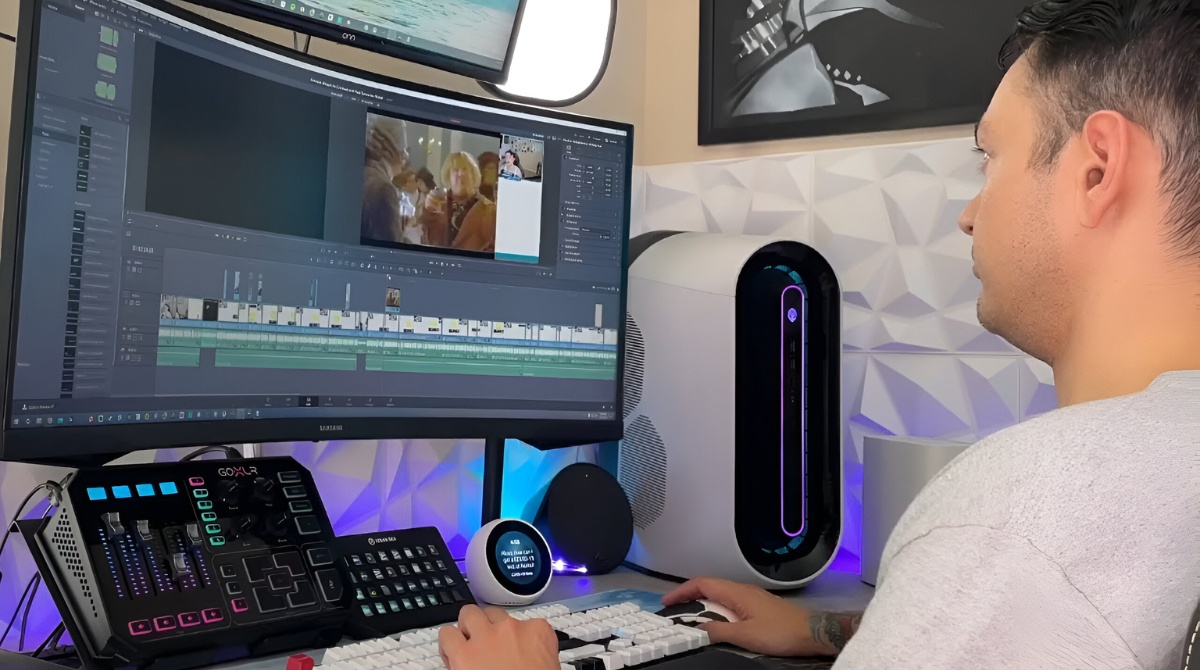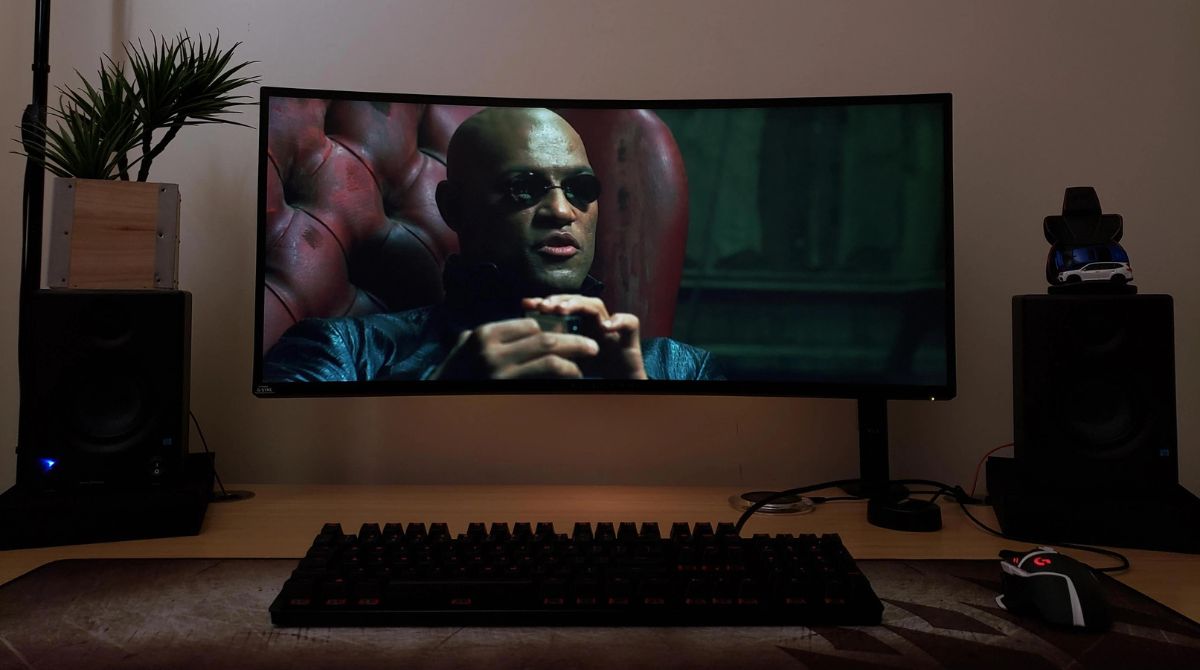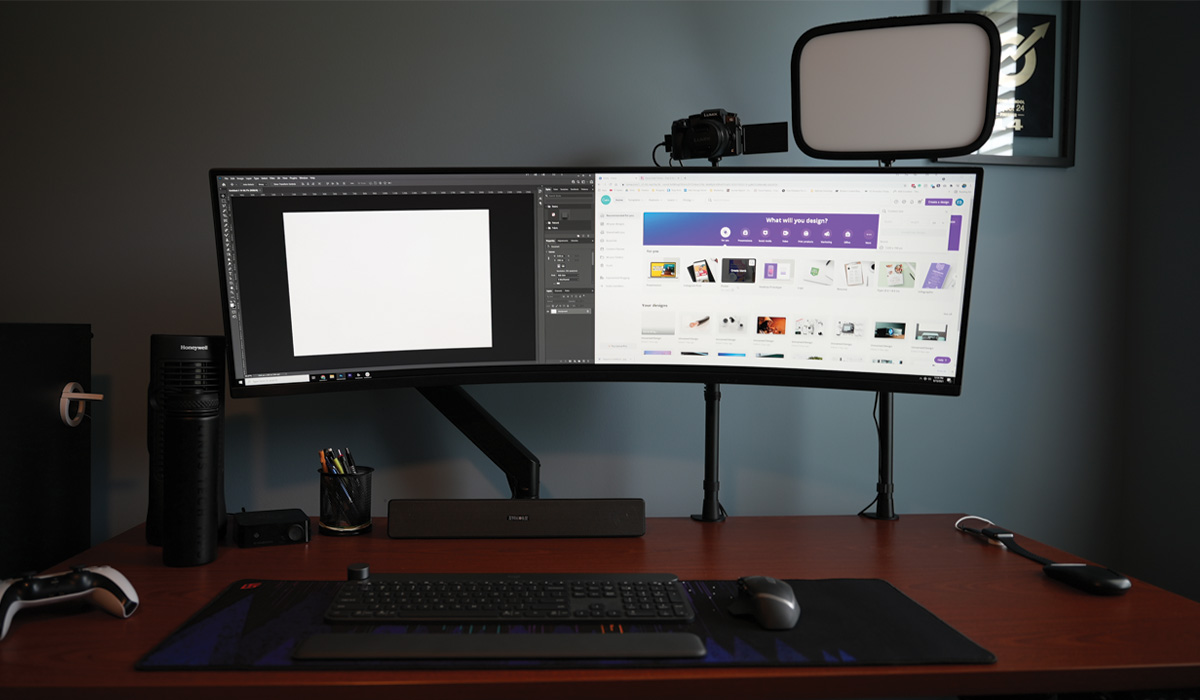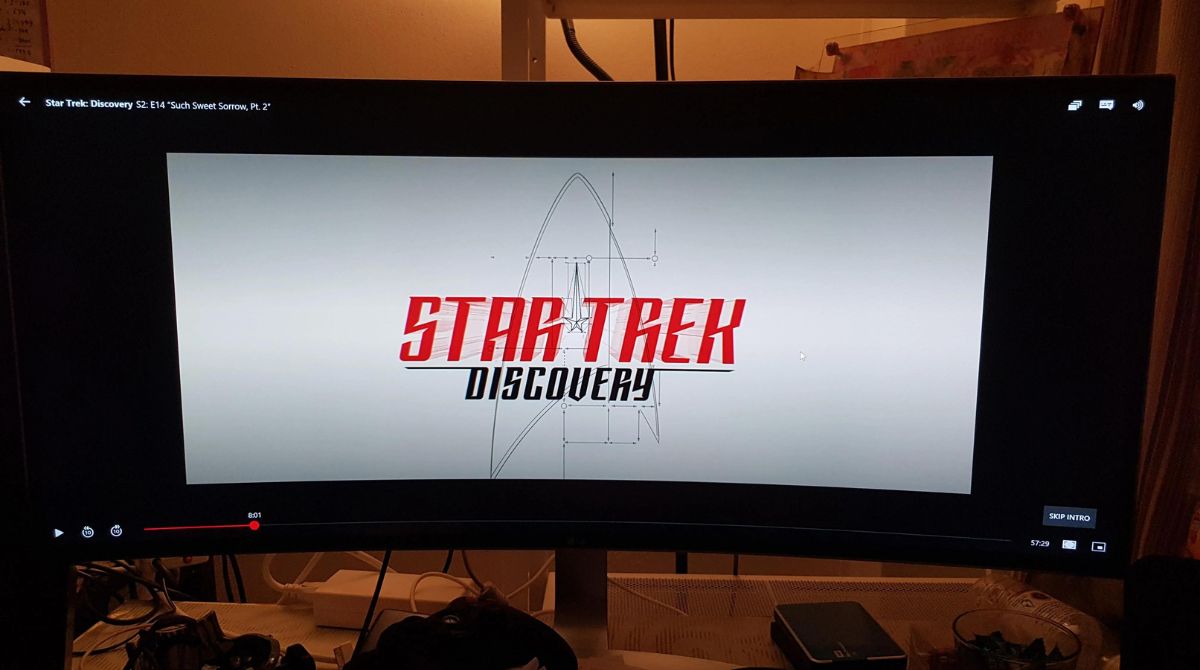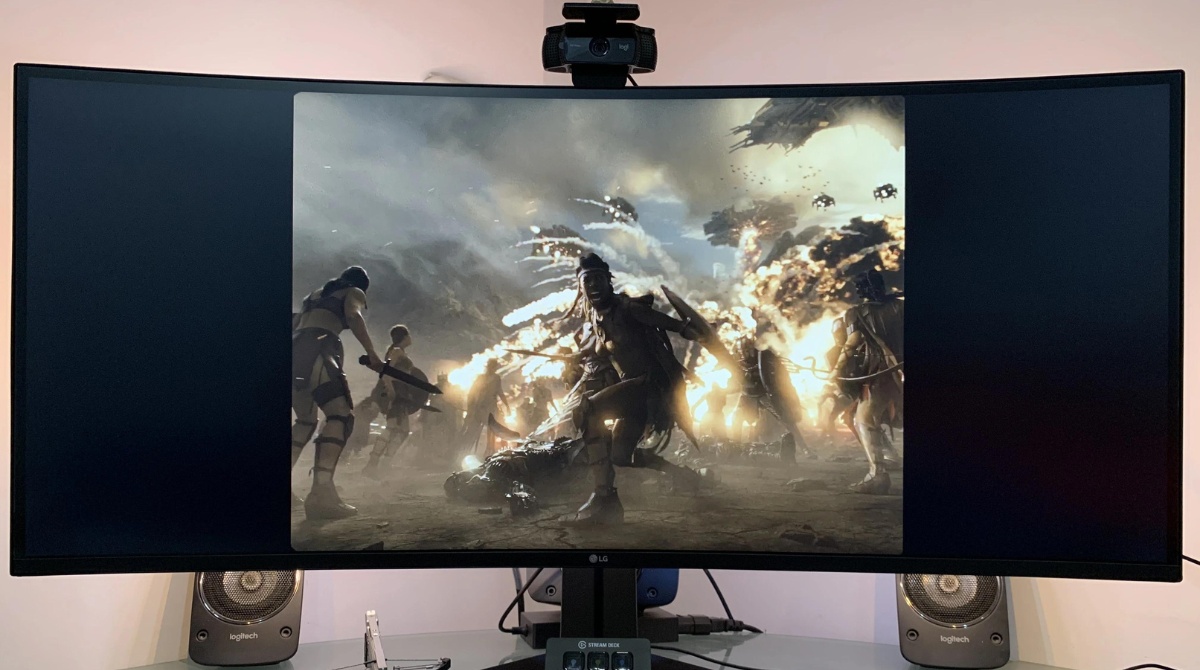Introduction
Welcome to the world of ultrawide monitors, where you can immerse yourself in a panoramic viewing experience like never before. With their wider aspect ratio and vast screen real estate, these monitors are perfect for multimedia enthusiasts who crave an expansive display for watching videos. However, when it comes to viewing videos in fullscreen on ultrawide monitors, you might encounter some challenges due to the unconventional aspect ratio. But fret not, as we have got you covered with some handy tips and tricks to help you enjoy your favorite videos in fullscreen glory.
Ultrawide monitors typically feature an aspect ratio of 21:9 or even wider, offering significantly more horizontal space compared to traditional monitors. While this aspect ratio is fantastic for multitasking and productivity, it can cause videos to display with black bars on the sides when played fullscreen. These black bars, known as letterboxing, can be distracting and take away from the immersive experience you expect from an ultrawide monitor. However, with a few adjustments and some helpful tools, you can get rid of these black bars and enjoy your videos in fullscreen mode just as intended.
In this guide, we will walk you through the steps to view videos in fullscreen on your ultrawide monitor, regardless of the video player or browser you are using. We will cover adjusting monitor settings, enabling fullscreen mode in various video players, and even using browser extensions to enhance your video viewing experience. By the end of this guide, you will be able to make the most of your ultrawide monitor and enjoy videos in fullscreen with no compromise in quality or immersion.
So, without further ado, let’s dive into the world of fullscreen video viewing on ultrawide monitors and unlock the true potential of your immersive display.
Step 1: Adjusting Monitor Settings
Before we delve into the specific methods for viewing videos in fullscreen on an ultrawide monitor, it is crucial to ensure that your monitor is set up correctly. Adjusting the monitor settings will not only enhance your overall viewing experience but also help eliminate any potential issues that may prevent videos from displaying in fullscreen properly.
The first step is to navigate to your monitor’s settings menu. This can usually be accessed by pressing the physical buttons on the monitor itself or by using the manufacturer-provided software. Once you have accessed the settings menu, look for the display or image settings. The exact terminology may vary depending on your monitor model, but you should be able to find options related to aspect ratio, scaling, and overscan.
Start by selecting the correct aspect ratio for your ultrawide monitor, which is typically 21:9. This ensures that the screen is proportionally aligned for optimal video playback. If your monitor offers different aspect ratio options, make sure to choose the one that matches the native resolution of the monitor to avoid any stretching or distortion in the video.
Next, check if the scaling settings are properly configured. Sometimes, the monitor’s scaling settings might be set to a value other than 100%, which can cause videos to display incorrectly in fullscreen mode. Adjust the scaling settings to ensure that it is set to the default or recommended value. Keep in mind that changing the scaling settings might require a monitor restart to take effect.
Additionally, if your monitor has overscan settings, make sure to disable or adjust them accordingly. Overscan can cause the edges of the video to be cut off, resulting in a distorted fullscreen display. Disabling overscan will ensure that the entire video frame is visible and uncompromised.
After making these adjustments, exit the monitor settings menu and proceed to test if the videos play in fullscreen correctly. Open a video file or stream your favorite online video content and activate the fullscreen mode. If the video fills the entire screen without any black bars or cropping, then congratulations! You have successfully adjusted your monitor settings to ensure optimal fullscreen video playback. If not, don’t worry, we have more solutions to explore in the upcoming steps.
Step 2: Enabling Fullscreen Mode in Different Video Players
Once you have adjusted the monitor settings, the next step is to learn how to enable fullscreen mode in various video players. Different video players have their own unique ways of activating the fullscreen mode, and understanding these methods will allow you to enjoy videos in fullscreen on your ultrawide monitor seamlessly.
Let’s start with one of the most commonly used video players, VLC Media Player. To enable fullscreen mode in VLC, simply open the video you want to watch and click on the “Fullscreen” button located in the bottom-right corner of the player. Alternatively, you can press the “F” key on your keyboard to toggle fullscreen mode. If you encounter any letterboxing or black bars while playing a video in fullscreen, right-click on the player, go to “Video,” and select the “Crop” option to remove the black bars.
For users who prefer Windows Media Player, the process is just as easy. Open the video file in Windows Media Player, right-click on the player window, and select the “Fullscreen” option from the context menu. If you encounter any black bars, right-click on the player again, go to “Video,” and choose the “Fit video to Player on Resize” option.
If you are using a web-based video player, such as YouTube, the fullscreen functionality is usually available by clicking on the fullscreen icon located on the player controls. This can be a square icon with arrows pointing outward or a full-screen icon represented by four arrows pointing toward the corners. By clicking on this icon, the video will expand to fill the entire screen. If you encounter any letterboxing, try adjusting the video quality settings or using the browser extensions mentioned in the next step for a better fullscreen experience.
It’s important to note that some video players may not fully support ultrawide resolutions, leading to black bars appearing even in fullscreen mode. In such cases, you can explore alternative video players that are specifically designed for ultrawide monitors, such as PotPlayer or MPC-HC. These players offer more advanced customization options and better compatibility with ultrawide displays.
By understanding the fullscreen activation methods in various video players and making any necessary adjustments, you can ensure that your videos play seamlessly in fullscreen mode on your ultrawide monitor. Now that you’re familiar with enabling fullscreen mode, let’s explore some additional tips and tricks to enhance your video viewing experience on your ultrawide monitor in the next step.
Step 3: Using Browser Extensions for Fullscreen Videos
In addition to adjusting monitor settings and enabling fullscreen mode in video players, you can further enhance your video viewing experience on your ultrawide monitor by utilizing browser extensions. These extensions offer additional features and customization options to ensure that your videos play in fullscreen mode seamlessly.
One popular browser extension for enhancing the fullscreen experience is the “Fullscreen Anything” extension. Available for Chrome and Firefox, this extension allows you to toggle fullscreen mode on any webpage or element, including videos. Simply install the extension, navigate to the webpage with the video you want to view in fullscreen, and click on the extension icon. This instantly expands the video to fill the entire screen, eliminating any black bars or letterboxing.
For Chrome users, the “Magic Actions for YouTube” extension is a must-have. It offers a range of features to improve your YouTube viewing experience, including the ability to force videos to play in the native aspect ratio of your ultrawide monitor. This means that regardless of the video’s original aspect ratio, it will dynamically adjust to fit your screen perfectly in fullscreen mode.
Another handy extension for ultrawide monitors is “Ultrawideo.” This extension adds a dedicated button to the YouTube player, allowing you to switch between different aspect ratios and resize the video to fit your preferences. It also supports various ultrawide resolutions, making it easier to enjoy videos in fullscreen without any letterboxing.
If you use Firefox as your browser of choice, check out the extension called “Zoom for YouTube.” This extension provides a range of zoom options for YouTube videos, allowing you to resize the video player to your ultrawide monitor’s aspect ratio. It also includes keyboard shortcuts for quick and easy resizing, bringing you a hassle-free fullscreen experience.
Remember, these browser extensions not only help you achieve fullscreen mode, but they also offer additional customization options to enhance your overall video viewing experience. Play around with these extensions and explore their settings to find the perfect configuration that suits your preferences and your ultrawide monitor’s capabilities.
Now that you’re equipped with the knowledge and tools to enjoy fullscreen videos on your ultrawide monitor, let’s move on to some final tips and tricks to optimize your video viewing experience in the next step.
Step 4: Tips for a Better Video Viewing Experience on Ultrawide Monitors
While adjusting monitor settings, enabling fullscreen mode, and utilizing browser extensions are essential steps for enjoying videos in fullscreen on your ultrawide monitor, there are a few additional tips and tricks that can further enhance your video viewing experience. Let’s explore these tips to ensure you make the most out of your ultrawide monitor.
1. Optimize Your Display Settings: Take the time to calibrate your monitor’s display settings, such as brightness, contrast, and color saturation. This will help improve the overall video quality and ensure accurate color reproduction.
2. Adjust Video Quality Settings: Streaming services like YouTube and Netflix allow you to adjust the video quality. Select the highest available option to enjoy sharper and more detailed videos on your ultrawide monitor.
3. Use Surround Sound: Ultrawide monitors often have built-in speakers, but they might lack the depth and richness of a dedicated sound system. Enhance your viewing experience by connecting external speakers or headphones for a more immersive audio experience.
4. Experiment with Video Zoom: Some video players and browser extensions offer zoom functionality. Try experimenting with different zoom levels to find the ideal balance between maximizing the video size and maintaining the aspect ratio.
5. Consider Picture-in-Picture: If you want to multitask while watching videos, take advantage of the picture-in-picture (PiP) feature available in certain video players or through browser extensions. This allows you to watch videos in a small floating window while working on other tasks.
6. Explore Ultrawide-Specific Content: Look for video content that has been specifically formatted for ultrawide monitors. Some creators produce videos with a 21:9 aspect ratio, ensuring a seamless fullscreen experience without any black bars.
7. Consider Dual-Monitor Setup: If you have the option, consider using a dual-monitor setup with your ultrawide monitor as the primary display and a secondary monitor for additional tasks. This allows you to enjoy fullscreen videos on the ultrawide monitor while simultaneously working or browsing on the other screen.
By following these tips, you can optimize your video viewing experience on your ultrawide monitor and fully immerse yourself in the world of cinematic content. Remember to experiment with various settings and techniques to find the combination that suits your personal preferences and enhances your enjoyment of videos on your ultrawide monitor.
Conclusion
Congratulations! You have reached the end of our guide on how to view videos in fullscreen on an ultrawide monitor. By adjusting your monitor settings, enabling fullscreen mode in video players, utilizing browser extensions, and following some helpful tips, you can now enjoy a seamless and immersive video viewing experience on your ultrawide monitor.
Remember to begin by adjusting your monitor settings, ensuring the correct aspect ratio, scaling, and overscan options are set. This will eliminate any black bars or cropping that may occur while playing videos in fullscreen mode. Then, explore the fullscreen activation methods of different video players like VLC, Windows Media Player, and web-based players like YouTube. Familiarize yourself with the specific steps required to enable fullscreen mode in each player, including any additional customization options.
To enhance your experience even further, consider using browser extensions such as “Fullscreen Anything,” “Magic Actions for YouTube,” “Ultrawideo,” or “Zoom for YouTube.” These extensions provide additional features and functionalities to optimize the fullscreen video playback on your ultrawide monitor. They allow you to eliminate letterboxing, adjust aspect ratios, and resize the video player to your preferences.
In addition to the technical aspects, implementing some useful tips can take your video viewing experience to the next level. Optimize your display settings, adjust video quality, consider using external speakers or headphones, and explore the possibilities of video zoom and picture-in-picture features. Don’t forget to search for content specifically formatted for ultrawide monitors to make the most out of your immersive screen real estate.
By following these steps and incorporating these tips, you can unlock the full potential of your ultrawide monitor and enjoy a cinematic experience right at your desk. Experiment with different settings, techniques, and tools to find the combination that suits you best.
Now it’s time to sit back, relax, and immerse yourself in the world of videos, knowing that you have the knowledge and tools to view them in fullscreen on your ultrawide monitor. Happy viewing!







